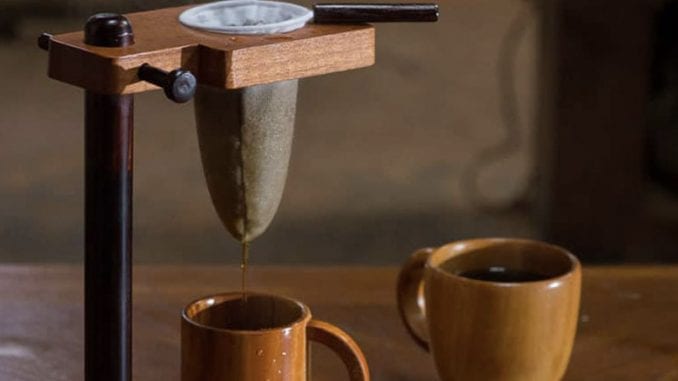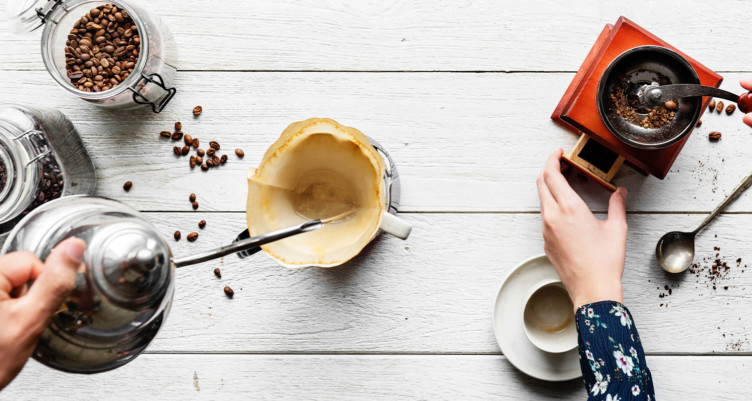Discovering the Art of Coffee Brewing Methods: Tips for every single Fanatic
Discovering the Art of Coffee Brewing Methods: Tips for every single Fanatic
Blog Article
The Science Behind Coffee Developing: How Temperature Level and Time Affect Your Beverage
Comprehending the science behind coffee brewing exposes that temperature and time are not mere variables yet crucial elements that dictate the drink's flavor account and general high quality. The optimal developing temperature level typically falls between 195 ° F and 205 ° F, while the duration of removal differs dramatically across various approaches. This interplay of factors can result in a cup that is either unsatisfactory or delightful. As we check out the subtleties of these elements, the concern develops: how can one efficiently equilibrium temperature and time to accomplish that ideal mixture?
The Chemistry of Coffee Extraction
The chemistry of coffee removal digs right into the intricate procedures that change raw coffee beans right into the fragrant drink appreciated worldwide. This improvement mainly includes the solubility of different compounds present in the beans, which are influenced by elements such as work size, water high quality, and the brewing approach utilized.
During the developing procedure, hot water works as a solvent, extracting soluble compounds, consisting of high levels of caffeine, sugars, lipids, and acids, from the coffee grounds. Each compound adds to the taste account, fragrance, and body of the last drink. For example, acids are accountable for appetizing and bright notes, while oils add to an abundant mouthfeel.
The first stages of developing extract acids and sugars, leading to a positive level of acidity, while prolonged extraction can lead to resentment due to over-extraction of unfavorable substances. Understanding these chemical interactions is crucial for enhancing developing techniques, as the balance in between removal time and water temperature can considerably affect the general quality of the coffee.
Ideal Brewing Temperatures
Discovering the best brewing temperature level is necessary for opening the full possibility of coffee tastes and scents - coffee brewing methods. Research study suggests that the optimum range for developing coffee lies between 195 ° F to 205 ° F(90 ° C to 96 ° C) Within this variety, the removal procedure properly liquifies the preferable soluble compounds in coffee beans, resulting in a balanced and flavorful mug
Developing at lower temperature levels, such as below 195 ° F(90 ° C ), may cause under-extraction, producing an acidic and weak mixture with soft tastes. Alternatively, developing at temperatures exceeding 205 ° F(96 ° C) can bring about over-extraction, creating a bitter and extreme taste as a result of the extreme dissolution of unwanted compounds, such as tannins.
Additionally, the optimal developing temperature level can differ depending on the coffee bean kind and roast degree. Lighter roasts typically profit from slightly greater temperature levels to improve their complicated taste profiles, while darker roasts may be better fit to reduced temperature levels to minimize bitterness.
Eventually, keeping precision in brewing temperature levels is critical for attaining a harmonious equilibrium of flavors, ensuring that every cup of coffee provides a gratifying sensory experience.
Impact of Brewing Time
Developing time plays a pivotal role in identifying the taste profile and total top quality of coffee. Shorter brewing times can result in under-extraction, leading to a weak or sour taste, as not adequate soluble compounds are liquified.
Ideal brewing time differs depending on the approach used and the work size of the coffee. A French press normally requires regarding four minutes, while coffee extraction is usually completed within 25 to 30 secs. It is vital to calibrate brewing time in conjunction with various other variables, such as water temperature and coffee-to-water proportion, to accomplish the wanted flavor profile.
Understanding the influence of brewing time allows coffee lovers to refine their brewing techniques, eventually improving the sensory experience of their mug (coffee brewing methods). With mindful focus to this variable, one can unlock the full possibility of the coffee, disclosing its special features and subtleties
Brewing Methods and Their Results

For example, techniques like French press and cool brew permit a longer steeping time, causing a fuller body and robust taste due to raised extraction of oils and soluble solids. Alternatively, coffee developing makes use of high pressure and a shorter extraction time, creating a concentrated shot that stresses extreme tastes and an abundant crema.
Pour-over strategies, additional hints such as Chemex or V60, provide a more regulated extraction procedure, enabling the maker to manipulate flow price and water circulation, which can boost illumination and clarity. Meanwhile, percolation methods cycle water through the coffee grounds several times, resulting in a more powerful, often bitter flavor.
Lastly, using paper filters versus steel filters can additionally influence the final taste; paper filters generally yield a cleaner cup by capturing oils and fine fragments, while steel filters permit even more oils to go through, contributing to a fuller mouthfeel - coffee brewing methods. Comprehending these subtleties can raise the coffee experience dramatically
Tips for Improving Your Mixture
A well-executed brew can change also the easiest coffee into an impressive experience. Grind the beans just prior to making to optimize quality, ensuring the grind size matches your brewing method-- coarser for French press and finer for coffee.
Water high quality plays an essential role; usage filteringed system water free from contaminations. The suitable developing his explanation temperature level varies between 195 ° F and 205 ° F(90 ° C to 96 ° C ) As go to website well hot can burn the coffee, while too trendy may under-extract flavors.
Timing is equally essential. For immersion approaches, steeping for three to 5 minutes is optimum, whereas drip approaches commonly take about 5 mins. Explore brew times to discover your favored toughness.

Verdict
In summary, the intricate connection in between temperature and time is paramount in the coffee developing process. Abiding by optimal brewing temperatures between 195 ° F and 205 ° F, along with precise timing customized per approach, guarantees the wanted taste profile is attained. Understanding these clinical concepts empowers individuals to fine-tune their developing strategies, ultimately causing a more well balanced and delightful coffee experience. Proficiency of these factors is necessary for any kind of coffee fanatic looking for quality in their drink.
Understanding the scientific research behind coffee brewing exposes that temperature and time are not mere variables however essential aspects that dictate the drink's taste account and total top quality. Recognizing these chemical communications is important for enhancing developing techniques, as the balance between extraction time and water temperature level can significantly influence the total high quality of the coffee.Developing time plays a crucial role in figuring out the taste profile and overall top quality of coffee. By focusing on these components-- bean top quality, grind size, water temperature level, steeping time, and proportion-- you can boost your coffee brewing procedure, resulting in a continually superior cup.
In summary, the intricate relationship in between temperature and time is vital in the coffee developing procedure.
Report this page